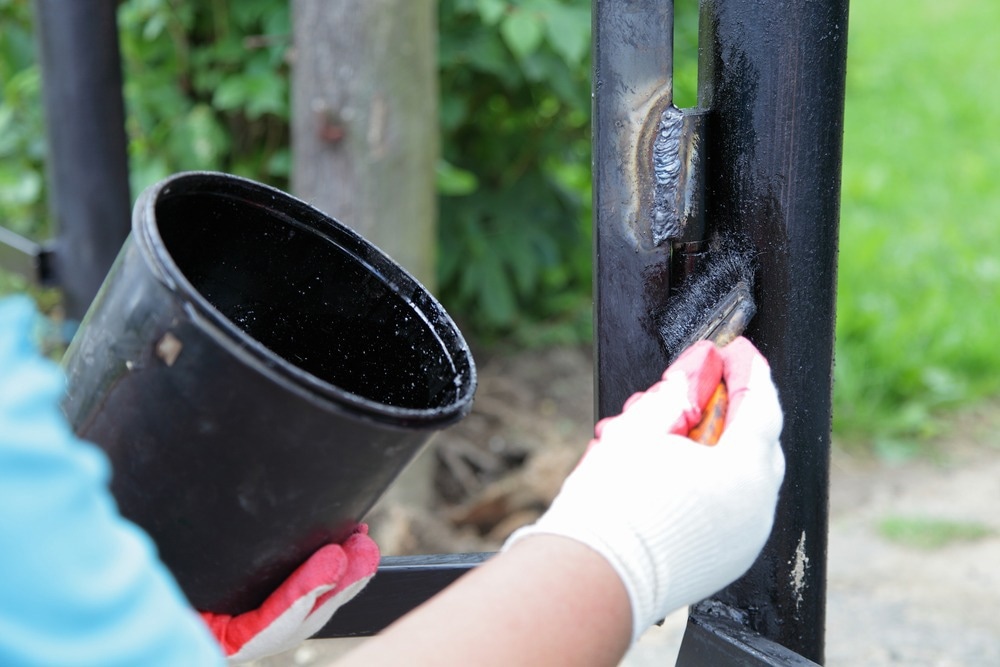Many weight-sensitive applications such as vehicles, electronics, and aircraft need a thin and lightweight radiative cooling paint made of nanoporous materials. However, achieving high solar reflectance in nanoporous paints with thin layers is a major challenge.

Study: Thin layer lightweight and ultrawhite hexagonal boron nitride nanoporous paints for daytime radiative cooling. Image Credit: ilmarinfoto/Shutterstock.com
A recent study published in the journal Cell Reports Physical Science addresses this issue by fabricating a lightweight and ultrawhite nanoporous paint using hexagonal boron nitride (hBN) for daytime radiative cooling applications.
Radiative Cooling: Overview and Significance
According to the US Energy Department, space cooling accounts for 6% of the typical household's power consumption because cooling systems depend on substantial carbon emissions to generate power. While many countries are attempting to solve the climate crisis, developing technologies that can help minimize carbon emissions in all aspects of daily life is critical.
Radiative cooling is a passive type of cooling that reflects direct sunlight, releases radiant heat into deep space via an air-transparent window, and eliminates the need for power production to lower carbon emissions.
Traditional air conditioning dissipates heat from properties into the surrounding air, so heat remains in the neighborhood and on the planet. Radiative cooling, on the other side, dissipates heat straight to deep space, lowering the heat-island effect and cooling the planet.
Challenges Associated with Radiative Cooling Technologies
Radiative cooling technologies have improved significantly over the years. Previous studies have assessed the radiative cooling efficacy of various widely accessible white paints, with some exceeding 91% reflectivity. However, the increased solar reflectivity was due to the metallic substrate rather than the paint itself.
Non-paintable technologies have also been used in certain applications to achieve radiative cooling. Aside from specific radiative cooling effects, sintered-reflecting ceramic films composed of aluminum oxide, hBN, and other nanoparticles have been employed for aerospace applications, achieving a spectral reflectance of 87.5%.
However, these techniques have several drawbacks, such as requiring a metallic layer, sophisticated multi-layered frameworks, and a high thickness of greater than 1 millimeter to attain the necessary solar reflectance. Although radiative cooling films include polymeric components similar to paints, they are not paintable, limiting their practical applicability.
Importance of a Thin and Lightweight Radiative Cooling Paint
Cooling paints that can be applied using a regular brush, roll, or spray-painting method are desirable for their simplicity and ability to be applied to non-flat surfaces. Therefore, there has been a revival in radiative cooling paint technologies in recent years.
Although nanoporous paint methods have demonstrated good performance and convenience, they need 300 micrometer thickness to achieve 96% solar reflectivity in basic nanoporous polymer films and 400 micrometer thickness to get the maximum recorded solar reflectivity of 98.1% in barium sulfate paint.
In comparison, the normal commercial paint thickness on cars is 120 micrometer and 150-200 micrometer on buildings. As a result, the optimum radiative cooling paints are substantially thicker and heavier than industrial paints presently in use and can be too heavy for many essential weight-sensitive applications such as cars, textiles, aircraft, and space applications.
There is, therefore, an urgent need to produce high-performance, much thinner, and lighter radiative cooling paints.
Highlights and Key Developments of the Current Study
In this study, the researchers created a thin and lightweight hBN nanoporous paint with strong solar reflectivity, sky window emission spectra, and complete daytime sub-ambient cooling. At low coating thickness, the radiative cooling performance of the as-prepared hBN nanoporous paint was experimentally verified.
The hBN nanoporous paint had a solar reflectivity of 97.9% and a sky window emissivity of 0.83 at a thickness of 150 micrometers. These are very competitive values compared to previously produced paints with much greater thickness. Additionally, the hBN nanoporous paint demonstrated wear protection, viscosity, and moisture resistance comparable to industry benchmarks at a fraction of the layer thickness.
Outdoor tests on hBN nanoporous paint revealed a surface cooling of 5-6°C below room temperature. These findings can be ascribed to the hBN nanoplatelet shape and the hBN filler's fairly large electronic bandgap, which minimizes UV absorption, resulting in a higher refractive index and nanoporous structure.
Based on these findings, it is reasonable to assume that the lightweight and ultrawhite hBN nanoporous paint developed in this study can be used in many industries, such as aircraft technologies, automobiles, and fabrics.
Reference
Felicelli, A. et al. (2022). Thin layer lightweight and ultrawhite hexagonal boron nitride nanoporous paints for daytime radiative cooling. Cell Reports Physical Science. Available at: https://www.sciencedirect.com/science/article/pii/S2666386422003526?via%3Dihub
Disclaimer: The views expressed here are those of the author expressed in their private capacity and do not necessarily represent the views of AZoM.com Limited T/A AZoNetwork the owner and operator of this website. This disclaimer forms part of the Terms and conditions of use of this website.